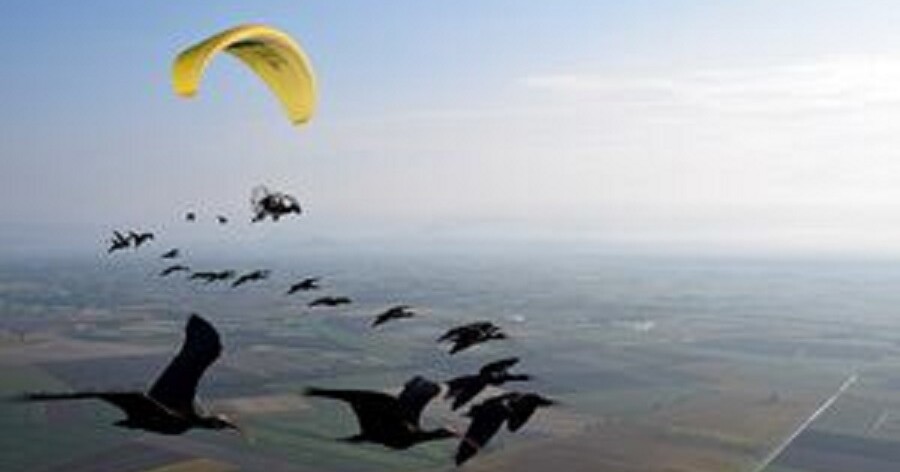
An Austrian ornithologist has pioneered an incredible way of wildlife rehabilitation by fostering chicks of an endangered species before re-instituting their migratory practice by leading them along their natural migration route with an ultralight aircraft.
The method was developed to help reconnect the northern bald ibis, a bird that was extirpated in Europe 400 years ago, with its summer-winter migration pattern from northern Europe to its sunny southern climes.
The history of these ibises is long, and by the time the Pilgrims sighted land on Plymouth Rock, Europeans had eaten probably all of them. Fortunately, other colonies survived in West and East Africa, and some in the Fertile Crescent.
In 2002, a small team of scientists and conservationists investigated the feasibility of reintroducing the northern bald ibis in Europe. This successful research project then led to a reintroduction project funded by the European LIFE-program in 2014.
It was the first project to reintroduce a migratory species back into the wild and soon became popular for the rather spectacular images of their main method of translocation: the human-led migration.
“Northern bald ibis chicks from the breeding program of zoological gardens form the basis for reintroduction. They are raised by human foster parents and trained to follow a microlight airplane with human foster parents as co-pilots. In this way, the juvenile birds are guided to a wintering area in autumn, where they are released.” explains Johannes Fritz, head and founder of Waldrappteam Conservation and Research.
Fritz was that one man for his time that decided there was no limit to the amount of effort he was willing to dedicate to reconnect these birds with their natural movements. The 56-year-old biologist and pilot was part of the reintroduction effort and found that while long periods of zoological captivity had not erased the birds’ instincts to migrate, their journey “south” took them to Russia.
MORE SUPER SUCCESSFUL CONSERVATION: Religious Practices Have Preserved 125,000 Sacred Groves in India, Growing a Conservation Success
That was when he started ferrying them over the Alps in his ultralight aircraft at the end of September.
In 2011, the first northern bald ibis migrated independently from the Tuscan winter area to its breeding area in Bavaria, marking the emergence of a new migration tradition, but it was a long time coming, and a long way yet to fly before these birds were able to migrate safely in large numbers.
Then, a changing climate saw their migration routes become unstable. Their instincts would see them depart their breeding areas north of the Alps in late October, and by November the mountains were impassible due to wind and snow. Three migrations failed this way.
Fritz came to the rescue again, hand-rearing chicks on ground mice and beef heart 8 times a day, while letting the inquisitive, gregarious chicks investigate his ears and nose for curiosity’s sake.
This was all a part of getting them to the age of flight when he would lead them again in his ultralight aircraft along a 2,500-mile circumnavigation of the Alps to a new wintering site on the sunny Spanish south near Cadiz.
BIRDS BACK FROM THE BRINK: Two Critically Endangered Baby Condors Born in National Park Are Healthy, ‘Adorable Fluffballs’
The New York Times charted the inaugural voyage, describing a man rolling what looks like a car seat, an airboat fan, and a bunch of scaffolding on three wheels out into a field while 35 ibises sat around poking their beaks into the muck in an early Austrian morning.
SHARE This Truly One-Of-A-Kind Conservation Success Story…



















